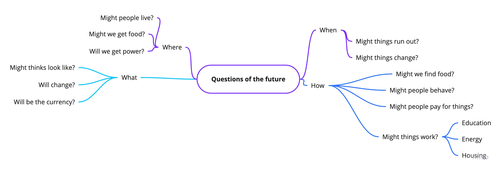






In this conceptual project, students are given a brief and apply their learning through the design and presentation of an artifact. Students love the challenge of speculating on the future and forming their concepts around a narrative. There have been some fascinating outcomes as students relish the creative freedom.
Speculative design is designing from a critical, political and/or ethical perspective in the form of an artifact from the near or distant future. There are several reasons why we might use speculative design:
To question and critique.
Raise awareness.
Start conversations.
Provoke, amuse or annoy.
The word ‘artifact’ is deliberate as the outcomes does not need to be a physical product. The outcome can be in the form of any 2D, 3D or digital ‘artifact(s)’. For example it could be a guide, a map, packaging etc. Trying to make the future artifact as believable as possible through storytelling.
Project structure:
What is speculative design?
Mind-map tasks
Case study
Imagining the world in 2067 in regards to society, housing, resources, economy, politics, technology, health and environment
Critique Sessions
Prototyping of artifact
Final presentation
The project can help students develop their rapid prototyping, storytelling, critiquing and presenting skills. It has been delivered to both college and university students.
Something went wrong, please try again later.
This resource hasn't been reviewed yet
To ensure quality for our reviews, only customers who have purchased this resource can review it
Report this resourceto let us know if it violates our terms and conditions.
Our customer service team will review your report and will be in touch.